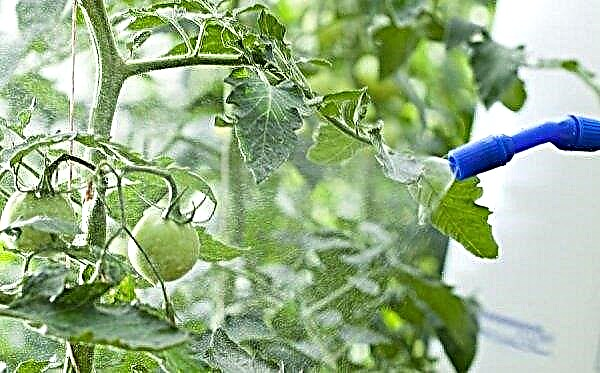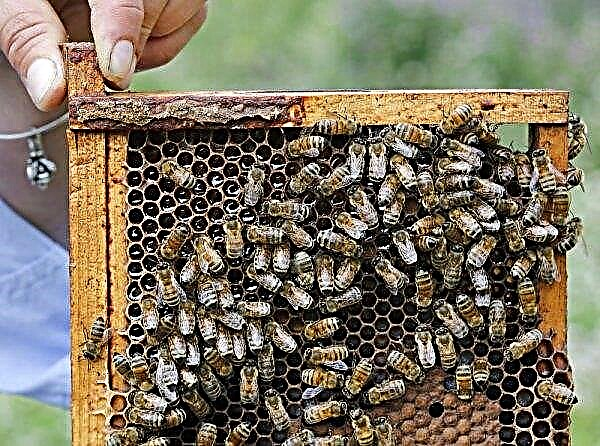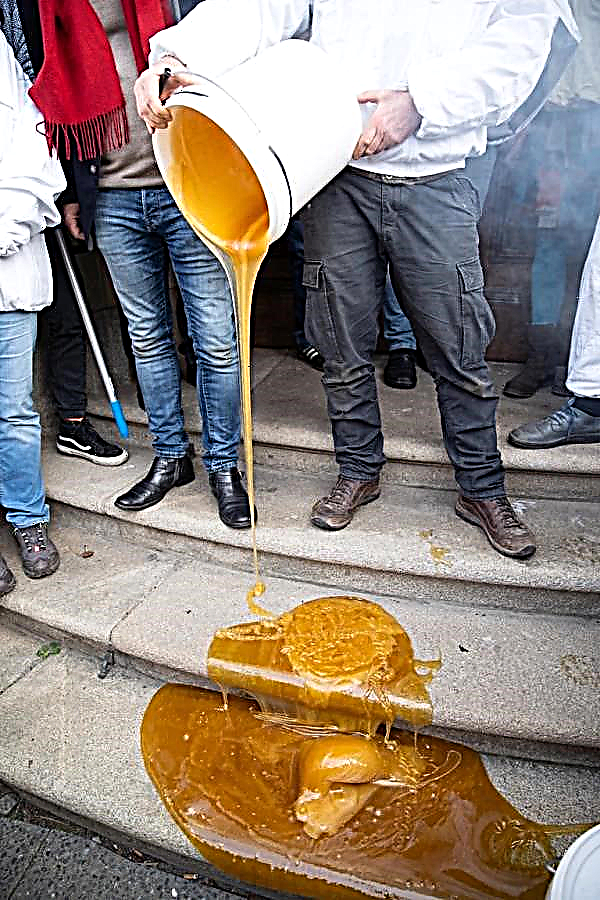Growing blueberries is not such a popular activity as, for example, growing strawberries or currants, so few people know that this crop grows only on certain soils. In order to collect a large crop of delicious fruits every year, it is necessary to carefully monitor the level of soil acidity.
Why does blueberry need acidic soil
Cultivation of garden blueberries is carried out if the soil pH is in the range of 3-4.5 units. If the soil into which it was planted is alkaline, then the plant may die. The signs that characterize the alkalization of the earth include:
- yellowness and dryness of foliage;
- the appearance of small flowers;
- the manifestation of the symptoms of many diseases (anthracnose, powdery mildew, root rot and gray spotting);
- change in the taste and size of berries (they become acidic and small).

So that the development of the culture is not disturbed, it is necessary to regularly acidify the soil with special preparations. You can also create solutions from improvised tools that are easy to find at home.
How to identify the soil
You can independently determine the level of soil acidity, if you look closely at the external parameters of the bush. For more accurate information, you need to contact a special laboratory where you should bring a small amount of soil from the site. By paying a certain amount of money, you will receive specific values, up to ten thousandths of a percent.
Important! If the acidity increases to 5.5 units, the vital activity of mycorrhiza, a fungus that is in symbiosis with the root system of the culture, is disrupted. Thanks to him, the plant receives all the necessary nutrients.
If you grow blueberries for your own use (fresh, for preservation or making desserts), then exact acidity values are not required. To determine approximate indicators, use several common methods:
- Using a special device. It can be bought at gardening stores. Thanks to the instructions that come with the kit, it’s easy to learn how to use it.

- Using litmus test. Take a small amount of soil and dilute it in cool water (+10 ... + 18 ° C). Let it brew for 20–40 minutes. Put a litmus test in the container and look at the results. If a yellow color appears, it means that the soil is with neutral acidity, a red tint indicates increased acidity, and blue indicates alkali. Consider the intensity of the developed color. The brighter it is, the higher the concentration of an element.

- Using soda and vinegar. Take 2 containers and pour a little soil into each of them. Pour a little acetic acid into the first container. If a reaction occurs (bubbles formed), then alkali prevails in the soil. Pour soda into the second container. The appearance of the same reaction indicates high acidity.

How to acidify the soil for blueberries
There are several methods by which you can acidify the soil. Some of them depend on the mechanical composition of the soil. If the earth is loose, then you can use organic substances. It is necessary to add 10 kg of compost or 15 kg of cow humus per 1 m².
When organic matter rots, the acidity of the soil increases. If planting blueberries was carried out in heavy clay soil, then it is better to use colloidal sulfur. When water gets on it, then the introduced substance will be converted to sulfuric acid. If your garden plot reaches an area of 10 m², then at least 1.5 kg of sulfur will be required.
Soil acidification for blueberries is carried out by several methods:
- application of aluminum sulfate and iron sulfate - 1 kg per 10 m² (both components are taken in equal proportions);
- the use of urea (3 kg per 5 m²) or potassium salt (900 g per 10 m²);
- table vinegar (you need to dilute 900 ml of liquid in 10 l of water and pour the blueberry bushes with the resulting solution, 5 l are used for 1 plant).
Citric acid solution
The most common mixture to increase acidity, which is easy to prepare at home from improvised means, is a solution of citric acid.
The step-by-step preparation and use procedure is as follows:
- Dilute 2 tbsp. l powder in 6 l of water. It is better to use plastic containers, because the metal can oxidize.
- Let it brew for 30-60 minutes.
- Using a watering can, pour 3 liters of solution under each bush. At the same time, it should not fall on shoots and leaves, otherwise they will dry out.

The subtleties of planting and watering
Planting garden blueberries is carried out in loose soil, which is equipped with drainage, so coniferous sawdust (about 10-15 cm) is poured into the hole for planting (50 × 70 cm in size). The depth of groundwater should be 3 m, so that the deep roots of the culture are not in conditions of high humidity, otherwise the plant will be affected by root rot.

For planting, choose a site that is well lit by the sun, but protected from draft and gusts of wind. Try to plant bushes near barriers and tall fruit trees (at a distance of 3-5 m). For planting, seedlings are suitable, whose age is 2-3 years, and their root system must be closed. Keep a distance of 1.5 m between the bushes.
Phased landing process:
- Sprinkle half of the hole with sawdust (800 g), peat (2 kg), a solution of sulfur and citric acid (100 g of each substance in 10 liters of water).
- Place the seedling vertically in the hole and carefully distribute the root system.
- Fill the topsoil and tamp to avoid voids inside the pit.
- Pour each shrub with 10 liters of water and cover with a 15-cm layer of mulch. To do this, use fallen leaves or pine bark.

Further care for garden blueberries consists in thorough and regular watering. Use filtered water at room temperature (+20 ... + 24 ° C). If you do not have a filter, you can boil it and let it stand for 5 hours. All sediment will remain at the bottom of the tank. Pour at least 15 liters under each bush. The interval between irrigation is 3 weeks.
So, now you know how to determine the level of acidity in the soil for growing blueberries. To do this, you can use special devices, litmus papers or food products. Remember that the quality and indicators of the future crop depend on your attention and care for the crop.Did you know? In Ohio (USA), blueberries are considered a national berry. Every year festivals dedicated to her are held here.















